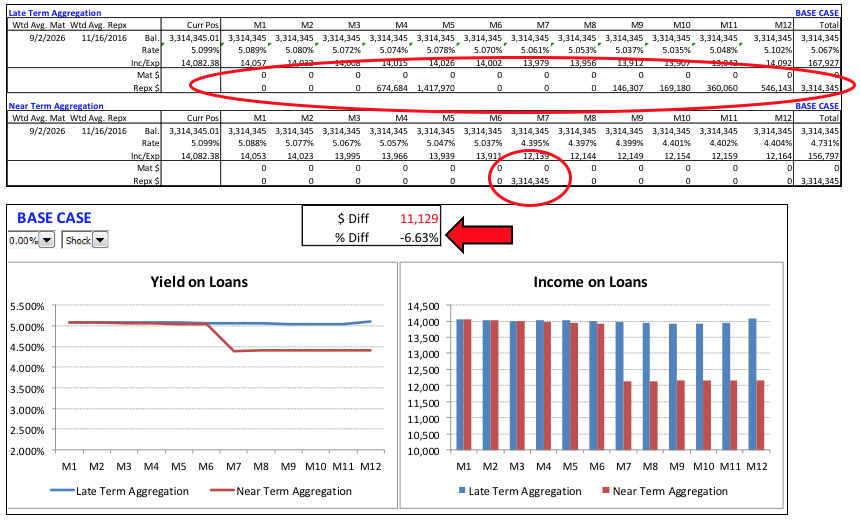Data Aggregation - The impact on your results
Does your model provide you with the most accurate picture of your balance sheet? All asset liability models have to aggregate data at some point in the process. The timing of that data aggregation can have an impact on the results you receive. Most models in the market place today use instrument-level data from your core provider as a starting point for analysis. However, what your model does with that information after it is received makes all the difference in the results. Many models look for homogenous groups within the instrument-level data with which to perform the analysis. The more categories that are used for analysis, the better. However, the best solution and what is more unusual in the market place is a model that analyzes each instrument individually then aggregates the results for an easy to read report.

The charts above show the impact on income of a grouping of 10 commercial loans that re-price within 12 months. Because timing is important of when each loan re-prices, being able to analyze each loan individually has a big impact in the results we have seen, even in the most simple balance sheet structures. Models that are capable of this type of instrument level analysis are generally more expensive than models that aren’t capable of this analysis. The above sample shows an income difference of 6.63% on just $3MM in loans, how big would the impact be on your portfolio? If you are making decisions on results that do not accurately portray your interest rate risk position, the cost could certainly be far greater with a “cheaper” model.